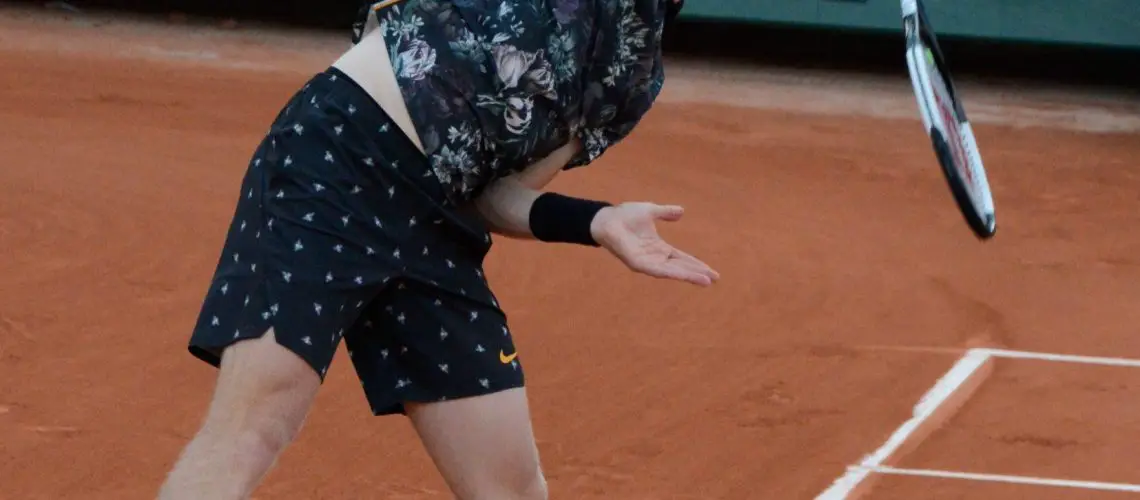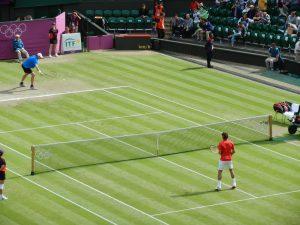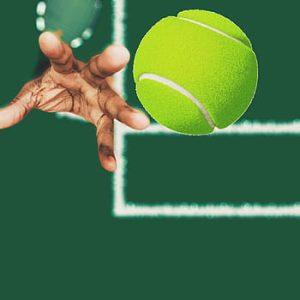We may earn money or products from the companies mentioned in this post.
Brief History of Table Tennis

Table tennis, also known as ping pong, is a fast-paced indoor sport that originated in Victorian England during the late 19th century It started as an after-dinner game played by upper-class families using books as paddles and champagne corks as balls The game quickly gained popularity and soon became a recognized sport with its own set of rules
Over time, table tennis has evolved into a highly competitive sport, with international tournaments and professional players showcasing their skills The International Table Tennis Federation (ITTF) was established in 1926 to govern the sport globally and organize world championships
Importance of Strategies in the Game

In table tennis, strategies play a crucial role in determining the outcome of matches While it may seem like a simple game where players hit a small ball back and forth across a table, there is much more to it than meets the eye
The strategic aspect of table tennis involves understanding your opponent’s strengths and weaknesses, adapting your playing style accordingly, and utilizing various tactics to gain an advantage This includes analyzing their shots, anticipating their next move, and countering with well-placed shots of your own
Effective strategies can help you control the pace of the game, exploit your opponent’s vulnerabilities, create openings for attacking opportunities, and ultimately secure victory on the table
Objective of the Article

The objective of this article is to delve deeper into the world of table tennis strategies We will explore different types of strategies used by professional players at various skill levels – from beginners to advanced competitors By understanding these strategies and incorporating them into your own gameplay, you can enhance your performance on the table
We will discuss offensive strategies that focus on aggressive shot-making techniques to put pressure on your opponent Additionally, we will explore defensive strategies that involve precise ball placement and strategic positioning to frustrate your opponent’s attacking attempts
Furthermore, we will look into tactical strategies such as varying spin and speed, changing the placement of shots, and using deceptive tactics to outsmart your opponent These strategies can keep your opponents guessing and give you a competitive edge
By the end of this article, you will have gained valuable insights into the world of table tennis strategies, enabling you to elevate your game and enjoy even more success on the table So let’s dive in and discover the secrets behind becoming a strategic master in table tennis!
Offensive Strategies

When it comes to table tennis, offensive strategies are key to gaining the upper hand in a match One effective technique is the topspin, which can be executed with both the forehand and backhand strokes The forehand topspin, also known as the loop, involves brushing the ball with an upward motion to generate spin and speed On the other hand, the backhand topspin, or flip, requires a quick wrist snap to create a powerful shot
So why should you use topspins? Well, these shots allow you to put pressure on your opponent by creating heavy spin and speed They are particularly useful when returning short balls or attacking high-bouncing shots By incorporating topspin techniques into your game, you’ll have more control over the trajectory of your shots and increase your chances of winning points
In addition to topspins, variations in ball speed and placement during rallies can catch your opponents off guard Changing up the pace of your shots can disrupt their rhythm and force them into making mistakes It’s also important to target their weak spots – areas where they struggle to return certain types of shots By exploiting these weaknesses strategically, you can gain an advantage in the match
Mixing up your shots is another effective way to keep opponents guessing By alternating between aggressive attacks and well-placed shots that require finesse, you can keep them on their toes and make it harder for them to anticipate your next move This element of surprise can give you an edge over your opponent and increase your chances of scoring points
Defensive Strategies

While offense is important in table tennis, defensive strategies play a crucial role in winning matches as well Chopping techniques are commonly used for defensive play The forehand chop involves using a downward chopping motion with the racket to create backspin, while the backhand chop requires a similar motion with the opposite side of the racket
Knowing when to use chopping techniques is key These shots are often employed when your opponent is attacking aggressively, as they can help you return powerful shots with control and accuracy By using proper technique execution, you can effectively defend against aggressive attacks and turn the tide in your favor
Blocking is another defensive strategy that involves returning your opponent’s shots with minimal motion Close-to-table blocking requires quick reflexes and anticipation to react quickly to fast-paced shots Reading your opponent’s shot intention is crucial in successfully executing this strategy
Long-distance defense comes into play when retrieving balls that are far away from the table This often involves utilizing defensive spins such as heavy chops or lobs to return difficult shots By mastering these defensive strategies, you’ll be well-equipped to handle various types of offensive plays from your opponents
Advanced Techniques And Tactics

Beyond basic offensive and defensive strategies, there are advanced techniques and tactics that can elevate your game even further Footwork and positioning are essential for setting up powerful shots By moving efficiently around the table and positioning yourself correctly, you’ll have better control over your shots and be able to generate more power
In doubles play, understanding partner dynamics is important for effective teamwork Rotations and positioning during matches should be coordinated with your partner to cover different areas of the table strategically Communication between partners is also crucial in ensuring seamless coordination and maximizing team performance
Mental preparation and focus are equally important aspects of advanced play Being aware of your own strengths and weaknesses allows you to capitalize on what you do best while working on improving areas that need development Adapting to your opponent’s playing style by analyzing their patterns can give you a significant advantage Lastly, staying positive and composed under pressure can help you maintain focus and make better decisions during intense moments
Useful Links

What are some good strategies to help win a game of table …
How to Beat Everyone in Your Office at Table Tennis
15 Ways How The Right Ping Pong Strategy Can Improve …
9 Ping-Pong/Table Tennis Tips and Tricks
8 Key Strategies Used to Win a Game of Table Tennis
(PDF) Learning strategies in table tennis using inverse …
Learning strategies in table tennis using inverse …
Test for Ping Pong (Table Tennis) Flashcards
The Third Ball Attack In Table Tennis – Pro Ping Pong Tips
Table Tennis Match Strategy Questions
Ping Pong Tactics: ABCs to Help You Win!
Winning Table Tennis: Skills, Drills, and Strategies
Strategies Used to Play TT Table Sport
Tennis Singles Strategy: 9+ Top Tactics to Win More Matches
Table tennis rules: Everything you need to know
171 Tips of the Week
Official Rules of Table Tennis
Table Tennis Tactics
Table tennis






